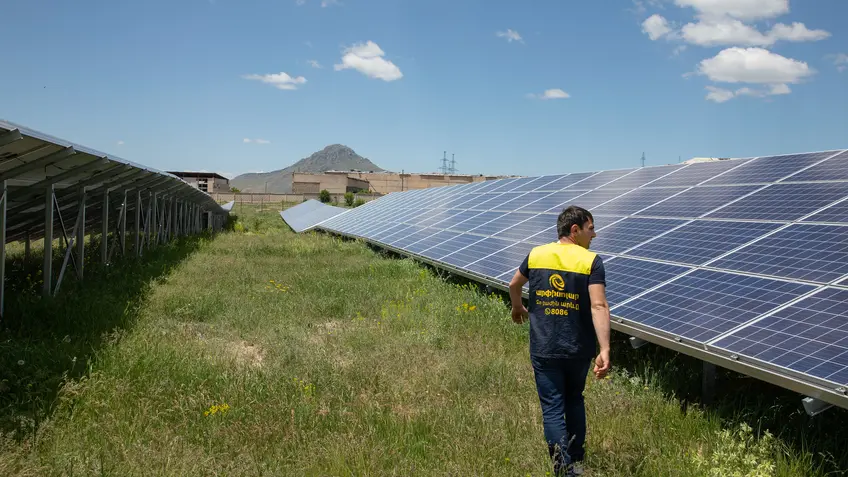Identifying Gaps and Analyzing Support for Nature-based Solutions
The natural environment is essential to the well-being and survival of humanity. Though understanding this essential concept is not new, scientists and climate professionals since at least the late 2000s have been using the umbrella term nature-based solutions (NbS) to describe the centrality of nature and how its benefits can strengthen human prosperity. NbS advocates have explored further how healthy ecosystems can provide economic and social benefits while at the same time playing an important function in mitigating the adverse effects of climate change. Indeed, an increasing number of studies show that NbS can help reduce greenhouse gas emissions and restore degraded ecosystems, strengthen the adaptation to climate change while also supporting the health and livelihoods of local communities. It is no surprise, then, that NbS are gaining prominence in the climate and sustainable development fields and beyond.
Increasingly, countries are incorporating NbS measures in Nationally Determined Contributions (NDCs) in their efforts to meet their commitments to the Paris Agreement and keep global temperature rise under 1.5 degrees Celsius. Indeed, 92% of enhanced NDCs include NbS to varying degrees, with 91 countries having incorporated NbS-related measures into their NDC’s adaptation actions and 96 having them in their mitigation targets.
A new Insight Brief developed by the Deutsche Gesellschaft für Internationale Zusammenarbeit (GIZ) on behalf of the German Federal Ministry for Economic Cooperation and Development (BMZ), based on NDC Partnership data addresses trends in support for NbS in developing countries’ NDCs. The analysis found, among other things, that forests and agricultural ecosystems are by far the most prominent areas in which NbS are embedded among Partnership countries’ NDCs (92% and 75%, respectively), while only 45% included NbS related to wetlands and just 4% to peatlands, the latter of which is particularly concerning given their high potential to act as carbon sinks. And though certainly more than in peatlands in number, it should be noted that NbS in urban areas, such as green-blue/natural infrastructure or urban ecological corridors, have been integrated in only 27% of partner countries’ NDCs, despite their significant contribution to climate resilience, disaster risk reduction and health and well-being of urban populations.
Nevertheless, there is an unmistakable and pronounced emphasis on NbS by countries, as evidenced by the fact that a total of 17% of all requests for support from NDC Partnership countries are NbS-related (by comparison, water-related requests for support add up to 12% of all requests). Most of these NbS requests are adaptation-focused (72%), slightly fewer are mitigation-focused (58%), and many are related to both, hence the sum of the two exceeding 100%. However, it is worth pointing out that the adaptation requests for support far exceed the overall NDC Partnership average of 28%.
On average, 51% of NbS requests are supported, only slightly lower than the average support rate of all requests to the NDC Partnership (58%). Still, the NDC Partnership could boost its overall support for NbS. The Brief provides a number of recommendations on how to best approach that, which includes, among other suggestions, strengthening NbS-related capacities, providing more sustained and active technical assistance, and breaking silos and fostering synergies between national plans and international processes. This can be done, in part, by supporting countries in their alignment of NDCs with National Adaptation Plans and National Adaptation Programs of Action, National Biodiversity Strategies and Action Plans (NB-SAPs) under the Convention on Biological Diversity (CBD) and the Land Degradation Neutrality (LDN) targets under the United Nations Convention to Combat Desertification (UNCCD).
In all, the Partnership is well positioned to move the needle further toward not only supporting nature-based solutions but also in helping developing countries make them priorities in their respective methods to combat climate change, increase their resilience and grow their economies.
“The use of nature-based solutions for climate mitigation and adaptation will be vital for building a sustainable and resilient future for all,” said Dr. Heike Henn, BMZ Director for Climate, Energy and Environment. “They offer important synergies for the achievement of our global biodiversity goals while also contributing to wider sustainable development objectives. It is our hope that countries will harness the huge potential of Nature-based Solutions in their new NDCs in good coordination with their National Adaptation Plans and National Biodiversity Strategies and Action Plans.”
As NbS become more prominent and more compelling for countries to holistically adopt, given the results they generate, the NDC Partnership will likely receive more requests for support in the future. The GIZ analysis on this front, and the recommendations on how to most efficiently meet these needs, will be essential in informing the Partnership about how to best move forward.
“The Partnership is more committed than ever to supporting countries to realize their climate ambitions through the use and effective deployment of Nature-based Solutions,” said NDC Partnership Global Director Pablo Vieira. “By incorporating NbS measures in both adaptation actions and mitigation targets, it is a win-win dynamic that will enhance countries’ NDCs as well as benefit the economies and well-being of local communities around the world.”
